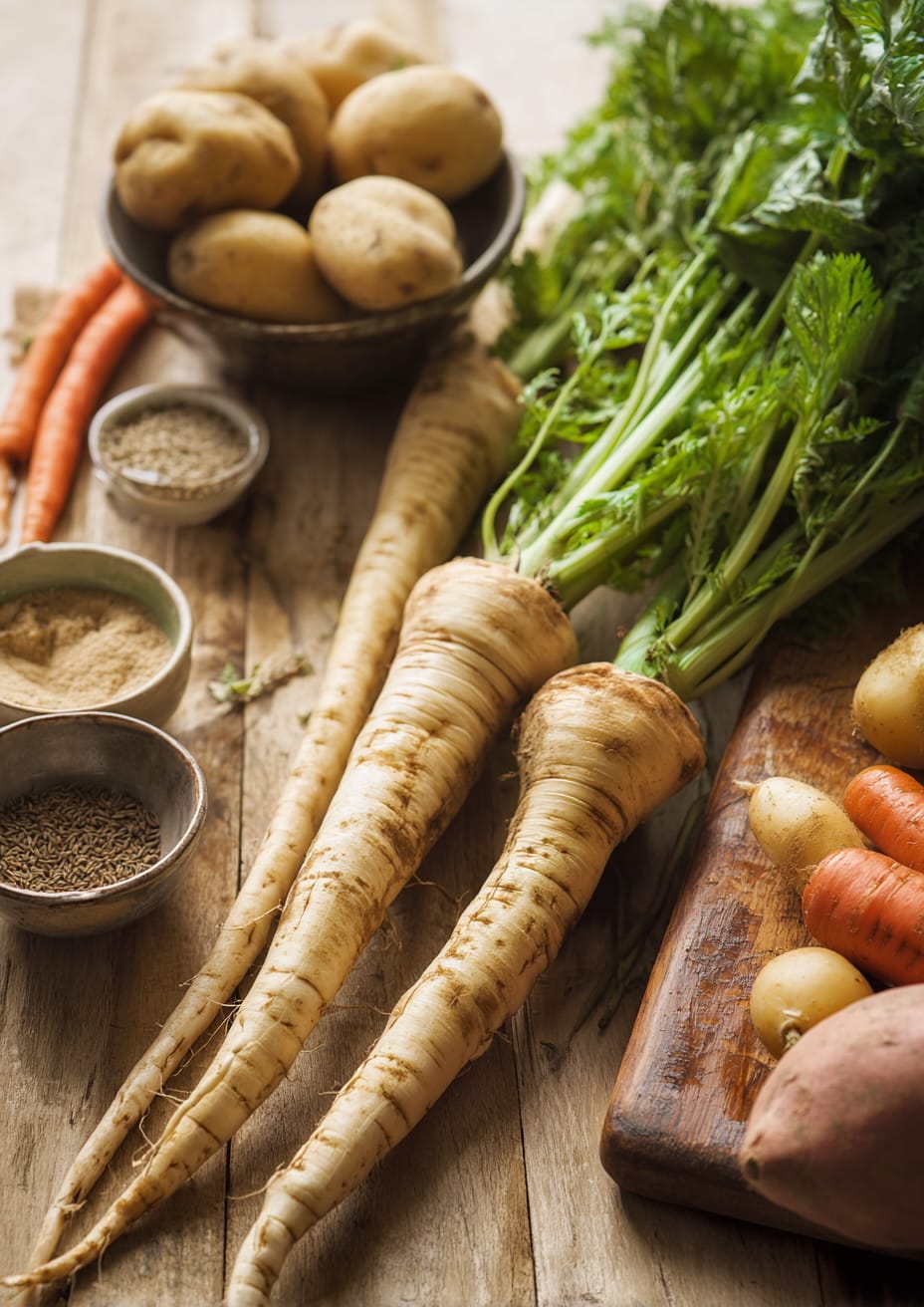Parsnips often sit on the same shelf as carrots and potatoes, yet people seem less sure about their health value. I’ve been asked many times whether they’re “just another starchy root” or if they bring more to the table. The truth is they’re both filling and nourishing, making them a smart addition to most diets.
They’re naturally sweet, which sometimes makes people wary of their sugar content. But that sweetness comes alongside fibre, vitamins and minerals that round out the picture. When used in dishes like spiced roast parsnips with cumin and coriander, the benefits are as much about nutrition as they are about flavour.
Table of Contents
What nutrients parsnips contain
Parsnips are high in fibre, which helps with digestion and satiety, and they provide a solid dose of potassium, vitamin C and folate. They’re low in fat and cholesterol-free, making them a heart-friendly side. The natural sugars are balanced by slow-release carbohydrates, so they don’t cause sharp spikes in blood sugar for most people.
Per 100 g raw, parsnips give around 75 calories, 18 g of carbohydrate, 1.2 g of protein, and nearly 5 g of fibre. That’s why they feel filling, even in modest portions. If you want to see how this plays out in recipes, I’ve included full nutrition panels under dishes like crispy roast parsnips with parmesan crust.
Comparing parsnips to other roots
Many people want to know whether parsnips are healthier than potatoes. While potatoes have more vitamin B6, parsnips offer higher fibre and potassium, so they complement each other rather than compete. Parsnips also tend to be lower in calories than sweet potatoes. If you’re keen on flavour comparisons too, try them side by side with something like roasted parsnips with balsamic glaze, where their natural sweetness really comes through.
Carrots share a family tree with parsnips, but their nutrition differs. Carrots give more vitamin A, while parsnips provide more complex carbs and minerals. Both are worth keeping in your weekly rotation, and both roast beautifully. For inspiration, have a look at our 7 best roasted parsnip recipes.
Frequently asked questions about parsnips
Are parsnips good for weight loss?
Yes, thanks to their fibre content. They keep you feeling fuller for longer with relatively few calories. If you’re trying to keep meals lighter, recipes like roast parsnips with mustard and sage are a great option.
Are parsnips good for diabetics?
Parsnips do contain natural sugar, but their fibre helps slow absorption. In moderation, they can fit into a balanced diet. You can read more about balancing starch and fibre in the ultimate guide to parsnip recipes: 30 must-try dishes, where I also cover cooking methods that affect nutrition.
Are parsnips anti-inflammatory?
Yes. Parsnips contain antioxidants like vitamin C and polyacetylenes, which are studied for their anti-inflammatory properties. For an easy way to cook them without losing nutrients, try honey roasted parsnips with thyme and garlic.
Are parsnips healthier raw or cooked?
Raw parsnips retain more vitamin C, but roasting concentrates flavour and doesn’t strip away most of their nutrients. I often shred them raw into salads, but I also love them caramelised in recipes like sticky soy and ginger roast parsnips.
Tips for getting the most nutrition from parsnips
Keep the skin on whenever possible, as it contains valuable fibre and antioxidants. Pair parsnips with a source of healthy fat, such as olive oil, to help absorb fat-soluble nutrients. If you’re worried about sugar, roasting with herbs and spices rather than sweet glazes is a simple way to enjoy them without added sugars.
Storage and nutrition retention
Store parsnips in a cool, dark place or in the fridge. Don’t wash until needed. They retain most of their nutrition for up to two weeks when stored correctly. Freezing works too, though texture changes slightly.

